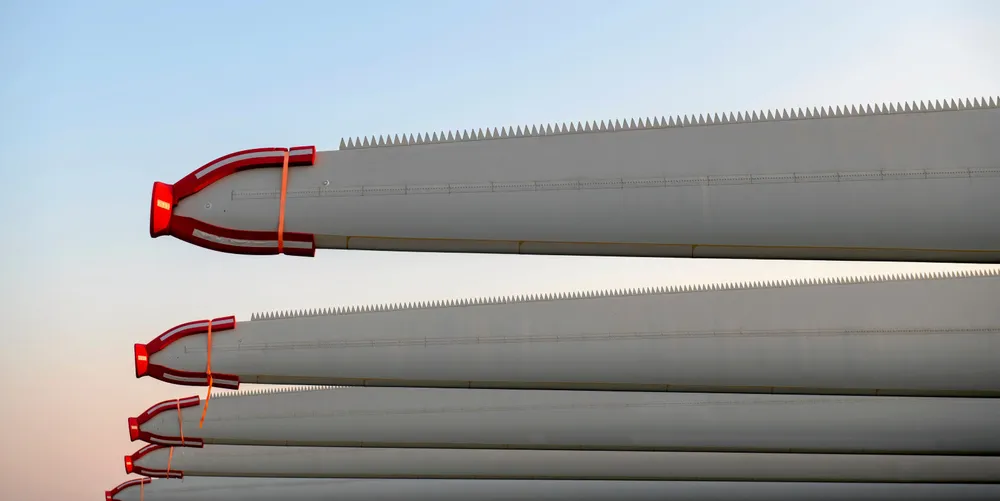'Next-level sustainability': Siemens Gamesa claims world first with recyclable offshore wind blade
RWE, EDF and Wpd committed to deploy new blade at upcoming projects, says OEM

Siemens Gamesa has launched what it claims to be the world’s first recyclable wind turbine blade ready for commercial use offshore, and has already lined up three of its major customers – RWE, EDF and Wpd – to deploy it at upcoming projects as soon as 2022.
The manufacturer at its blade plant in Aalborg, Denmark, has produced a first batch of six of the 81-metre-long components, named RecyclableBlade, which are part of its ambition to make the OEM’s turbines fully recyclable by 2040.
“In pioneering wind circularity – where elements contribute to a circular economy of the wind industry – we have reached a major milestone in a society that puts care for the environment at its heart,” Siemens Gamesa chief executive Andreas Nauen said.
“The RecyclableBlade is another tangible example of how Siemens Gamesa is leading technological development in the wind industry.”
Rival OEMs Vestas and GE and others in the industry are also pursuing strategies to reuse parts or materials of wind turbine blades.
With more than 200GW of new offshore wind capacity expected by the Global Wind Energy Council (GWEC) to be installed by 2030, non-recyclable blades have become a major problem for waste disposal, prompting several European countries to introduce bans on the use of fiber-reinforced composite in landfills.
If blades could be recycled, more than 200,000 of them could be avoided in landfills by 2050, Siemens Gamesa estimates.
Other parts of wind turbines, such as the tower and nacelles have already established recycling practices, but the composite materials used in blades so far have been more challenging to recycle, because a resin system binds all the components together.
Siemens Gamesa explains that its new recyclable blade is produced the same way as a standard blade and is based on the same manufacturing process. The only difference is the use of a new type of resin with a chemical structure that makes it possible to efficiently separate the resin from other components at the end of the blade’s working life, allowing the materials to be recycled for new applications.
The process protects the properties of the materials and so allows them to be reused in new casting applications, for example in the automotive industry, or in consumer goods like flight cases and flatscreen casings, RWE said.
The German utility plans to install “a select number” of wind turbines with recyclable blades at its Kaskasi project off the coast of Heligoland and test it under operational conditions from next year on.
“We are pleased that our offshore wind farm Kaskasi is able to provide a fantastic facility for testing innovations; here we are preparing to test special steel collars and to use an improved installation method for foundations,” RWE Renewables offshore wind CEO Sven Utermöhlen said.
“Now, Kaskasi is set to install the world’s first recyclable wind turbine blade manufactured by Siemens Gamesa. This is a significant step in advancing the sustainability of wind turbines to the next level.”
French peer EDF Renewables and German developer Wpd also plan to deploy several set of the new blades at future offshore wind farms.
“We are very enthusiastic to collaborate with industrial players, such as Siemens Gamesa, to contribute to the progress of the recycling technology solutions in the wind energy sector,” said EDF Renewables CEO Bruno Bensasson.
“EDF Renewables’ team is fully mobilised to develop this pioneer technology with its suppliers with the aim to continuously improve the environmental sustainability of our projects.”
Wpd offshore CEO Achim Berge Olsen added: “For the last 20 years, Wpd actively contributed to the sustainable development of the offshore wind industry.
“Through this cooperation in the recycling technology program of Siemens Gamesa, we’re making another step forward for the industry, which makes us enthusiastic regarding sustainability of the supply chain in the future”.
(Copyright)